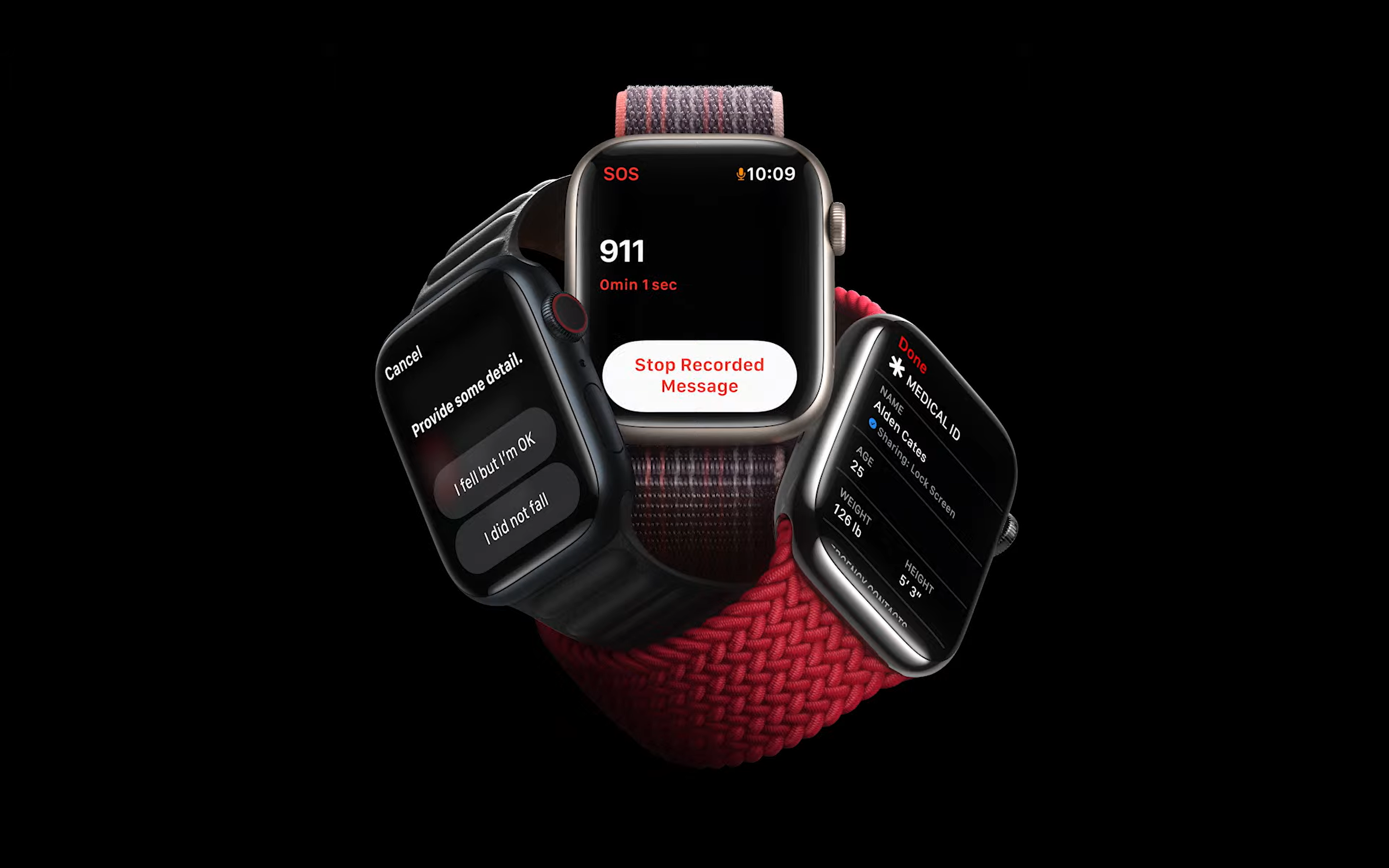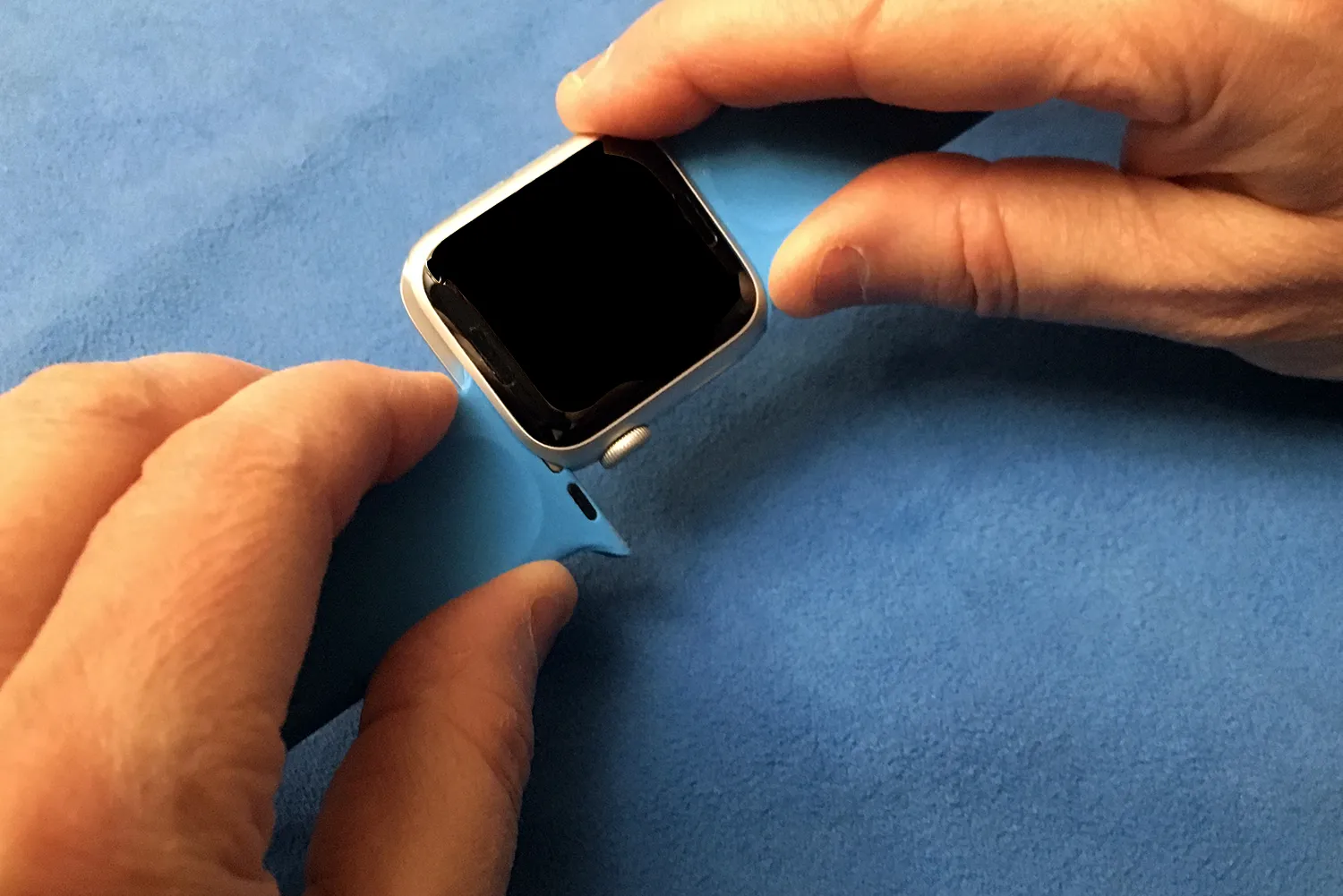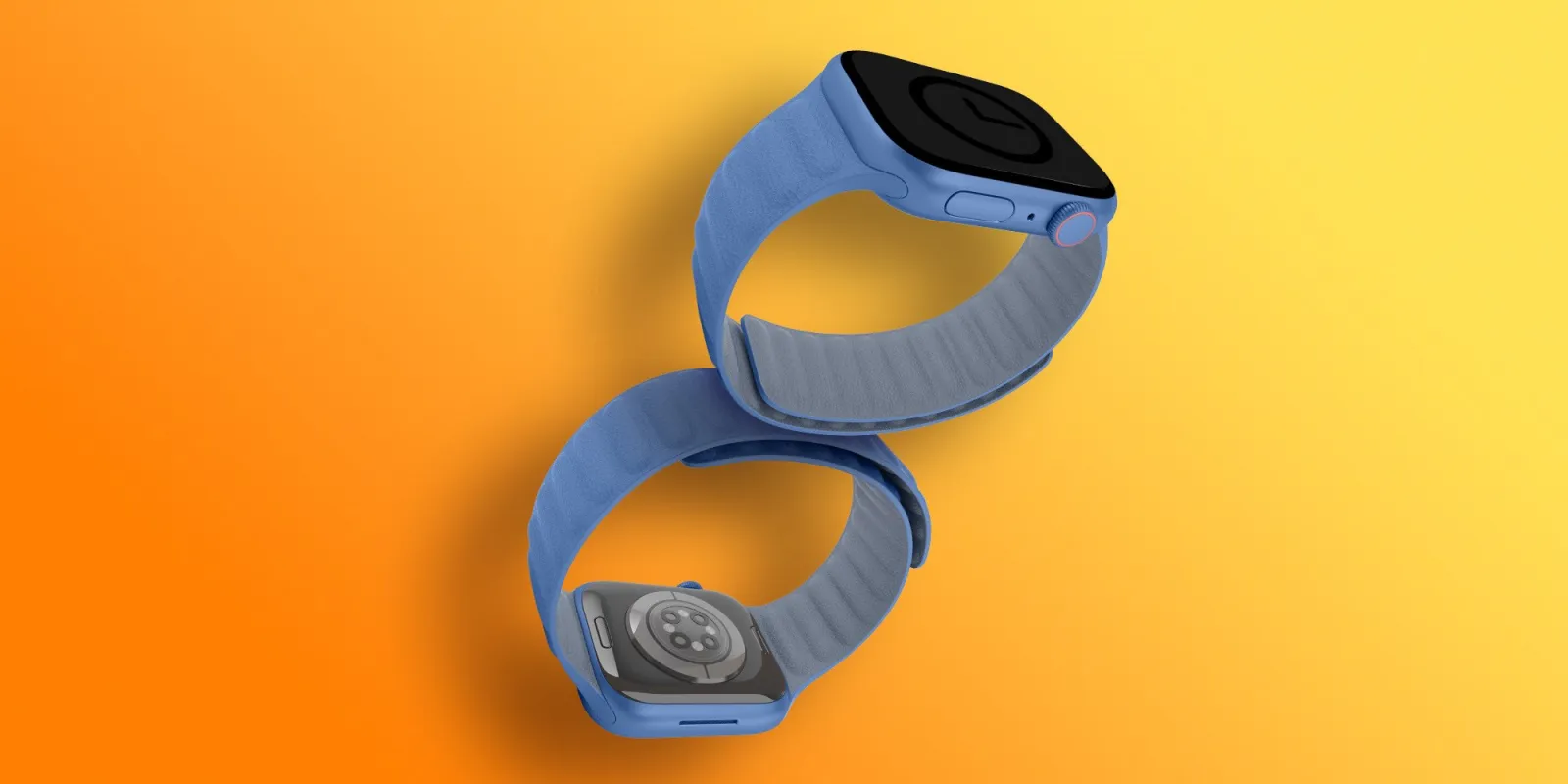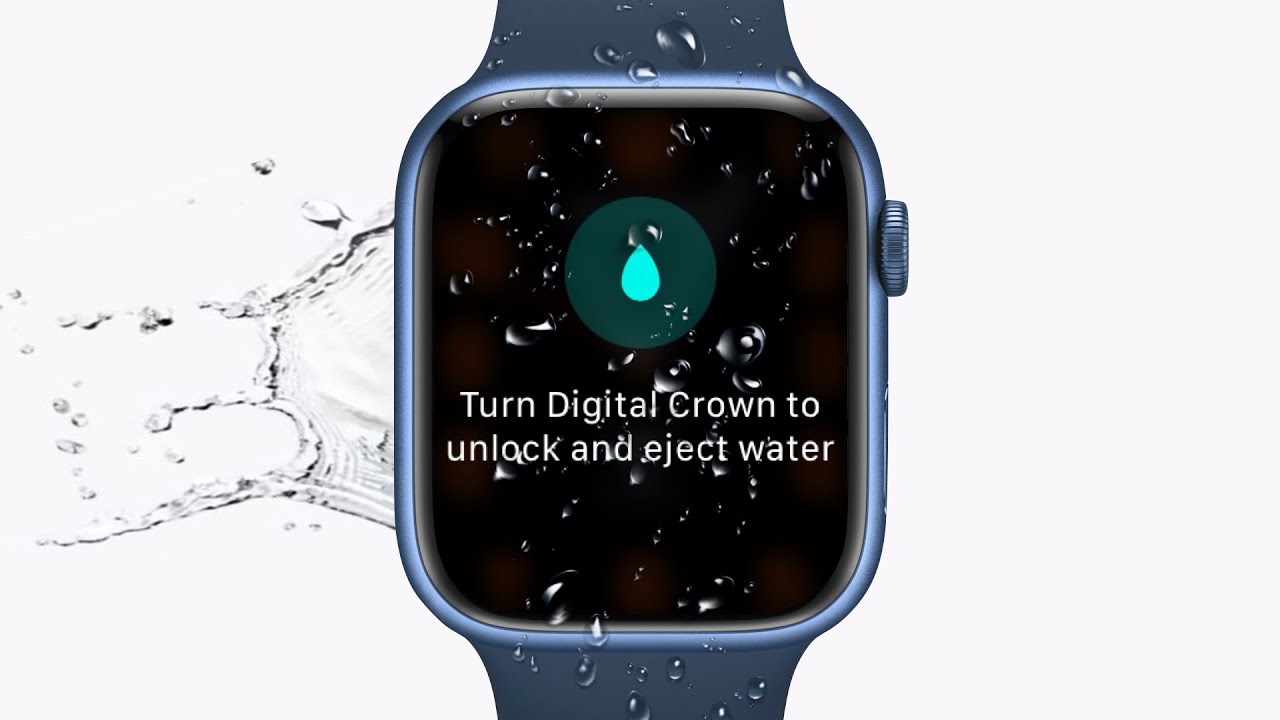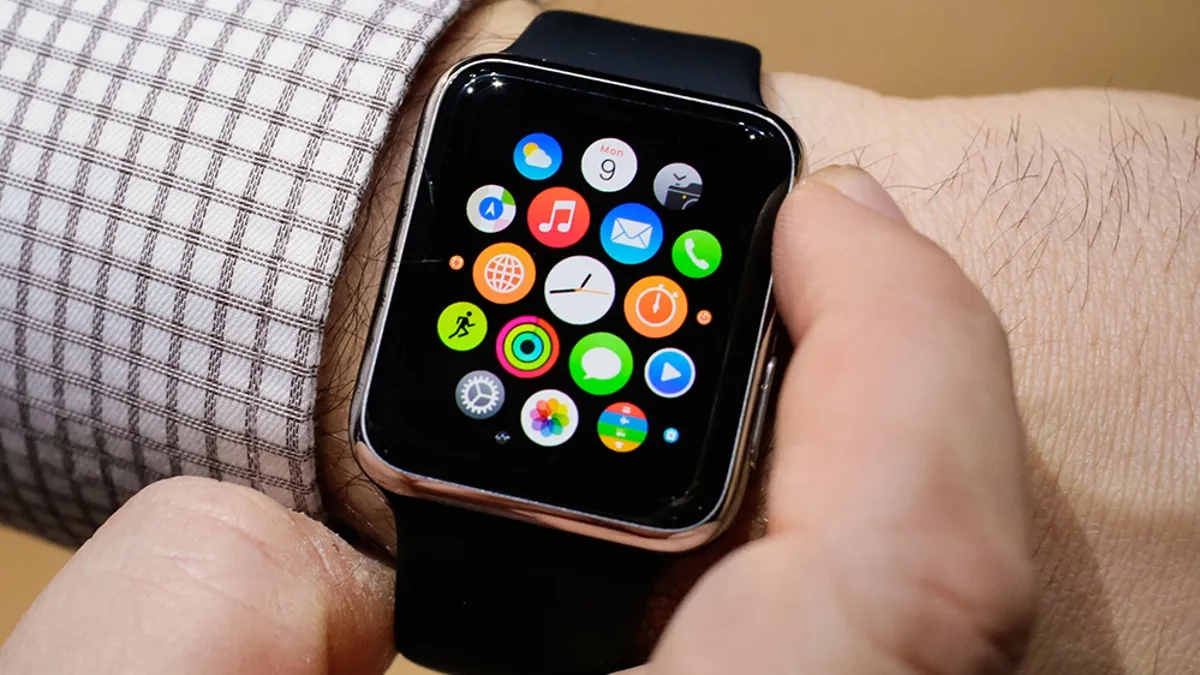Introduction
The Apple Watch, a revolutionary wearable device, has become an integral part of our lives since its release. With its sleek design, advanced features, and seamless integration with other Apple devices, the Apple Watch has taken the world by storm. In this article, we will explore the timeline of the Apple Watch’s release and highlight the key features and advancements in each generation.
Since its initial launch in 2015, the Apple Watch has evolved significantly, introducing new features and functionalities with each iteration. From fitness tracking to communication capabilities, the Apple Watch has become more than just a timepiece; it is now a powerful companion that helps us stay connected and live a healthier lifestyle.
In this article, we will take a closer look at each generation of the Apple Watch, starting from its inception and leading up to the latest models. We will delve into the features that set each generation apart and provide an overview of the advancements made in terms of design, performance, and functionality.
Whether you are a tech enthusiast, a fitness fanatic, or a fashion-conscious individual, the Apple Watch offers something for everyone. Its seamless integration with iOS devices has made it a must-have accessory for Apple enthusiasts, while its health and fitness tracking capabilities have revolutionized the way we monitor our well-being.
So, join us on this journey as we explore the timeline of the Apple Watch, from its groundbreaking release to its latest offerings. Discover how this innovative wearable device has changed the way we interact with technology, keep track of our health, and elevate our overall lifestyle. Get ready to dive into the world of the Apple Watch and uncover the future of wearable technology.
The First Generation Apple Watch (2015)
The Apple Watch made its debut in 2015, marking Apple’s entry into the wearable device market. This first-generation device introduced a whole new way of interacting with technology from our wrists. Designed with a focus on personalization and style, the Apple Watch offered various models, including the standard Apple Watch, the Apple Watch Sport, and the Apple Watch Edition.
The first-generation Apple Watch featured a square-shaped display with a range of customizable watch faces, allowing users to personalize their device to suit their style and preference. It came in two different sizes, 38mm and 42mm, catering to different wrist sizes and ensuring a comfortable fit for everyone.
One of the standout features of the first-generation Apple Watch was its ability to seamlessly integrate with the iPhone. With the Apple Watch, users were able to receive notifications, make calls, send messages, and access their favorite apps directly from their wrists. This level of convenience and connectivity revolutionized the way we interacted with our devices on a daily basis.
In addition to its communication capabilities, the first-generation Apple Watch also placed a strong emphasis on health and fitness tracking. It featured a built-in heart rate sensor, accelerometer, and gyroscope, enabling users to monitor their physical activity, track workouts, and set fitness goals. With the Apple Watch, users could stay motivated and informed about their health and fitness progress with the help of various fitness apps and a comprehensive activity tracker.
While the first-generation Apple Watch laid the foundation for future iterations, it did have some limitations. Its processing power was relatively modest, leading to occasional lag and slower performance compared to later models. Additionally, its battery life was not as long-lasting as desired, requiring daily charging for uninterrupted usage.
Overall, the first-generation Apple Watch was a game-changer in the wearable technology market. It introduced a new era of smartwatches and set the stage for future advancements in functionality and design. With its communication features and health tracking capabilities, the first-generation Apple Watch became more than just a fashion statement; it became a powerful tool that enhanced our daily lives.
The Second Generation Apple Watch (2016)
Building upon the success of the first-generation Apple Watch, Apple launched the second-generation Apple Watch in 2016, introducing significant improvements and new features. This iteration aimed to address some of the limitations of its predecessor and further enhance the overall user experience.
One notable enhancement in the second-generation Apple Watch was its improved performance. It featured a faster dual-core processor, which greatly improved its speed and responsiveness. Users experienced smoother app launches, quicker navigation through menus, and seamless multitasking capabilities.
In addition to the performance upgrade, the second-generation Apple Watch also brought advancements in terms of display. It introduced a brighter and more vibrant OLED Retina display, making it easier to view notifications, messages, and other content on the device. The display also utilized Force Touch technology, enabling users to interact with the watch by applying varying levels of pressure on the screen.
One of the most anticipated features of the second-generation Apple Watch was the addition of built-in GPS. With GPS functionality, users could now track their outdoor workouts and activities more accurately, without the need for a paired iPhone. This was a significant improvement for fitness enthusiasts who wanted to leave their iPhones behind during runs or hikes and still have access to GPS data.
The second-generation Apple Watch also introduced water resistance, allowing users to wear their devices while swimming or in shallow water. This feature opened up new possibilities for water-based workouts and made the Apple Watch a more versatile companion for active lifestyles.
Furthermore, the second-generation Apple Watch introduced a collaborative feature called “Activity Sharing.” With Activity Sharing, users could invite friends and family to compete in activity challenges, share workout data, and encourage each other to stay active. This social element added a fun and motivational aspect to fitness tracking and encouraged users to achieve their fitness goals together.
While the second-generation Apple Watch retained the design elements of its predecessor, it offered new case materials and band options, providing users with more customization choices. This allowed individuals to personalize their Apple Watch to match their style and preferences.
Overall, the second-generation Apple Watch brought significant improvements in performance, display quality, and functionality. It addressed the limitations of the first generation, making it a more powerful and versatile device. With added GPS, water resistance, and Activity Sharing, it catered to a wider range of users and solidified the Apple Watch’s position as a leading smartwatch in the market.
The Apple Watch Series 1 (2016)
In 2016, Apple introduced the Apple Watch Series 1, an upgraded version of the original Apple Watch. The Series 1 retained the iconic design of its predecessor but brought significant improvements in terms of performance and technology.
One of the primary enhancements in the Apple Watch Series 1 was its upgraded processor. It featured the same dual-core processor found in the second-generation Apple Watch, resulting in faster app launches and smoother overall performance. Users experienced improved responsiveness and a more seamless navigation experience.
Although the display and design remained unchanged, the Apple Watch Series 1 showcased better brightness and clarity, allowing for better visibility even in direct sunlight. Users were able to easily read notifications, messages, and other content on the screen, enhancing the overall user experience.
Additionally, the Apple Watch Series 1 introduced watchOS 3, Apple’s latest operating system at the time. This upgrade brought significant improvements to the Apple Watch’s functionality, including a more intuitive user interface, enhanced app performance, and access to new features such as the Breathe app for mindfulness and relaxation exercises.
The Series 1 maintained the original Apple Watch’s focus on fitness and health tracking. It continued to offer a built-in heart rate sensor and accelerometer, allowing users to monitor their activities, track their workouts, and measure their heart rate accurately. With the upgraded processor, fitness apps performed more efficiently, providing real-time data and encouraging users to stay active and achieve their fitness goals.
One downside of the Apple Watch Series 1 was the absence of built-in GPS and water resistance, features that were present in later models. However, users could still connect their Series 1 watch to their iPhone to access GPS data and track outdoor activities. Additionally, while the Series 1 lacked water resistance, it was splash-proof, making it suitable for everyday activities.
The Apple Watch Series 1 also offered a range of customizable options, including various band colors and materials, allowing users to personalize their device to reflect their style and personality.
In summary, the Apple Watch Series 1 was an upgraded version of the original Apple Watch, offering improved performance, brighter display, and access to watchOS 3. While it lacked some of the advanced features found in later models, the Series 1 still provided a seamless and comprehensive fitness tracking experience. Its affordable price point and stylish design made it an attractive option for those looking to enter the world of Apple Watch.
The Apple Watch Series 2 (2016)
In 2016, Apple unveiled the Apple Watch Series 2, a major update to its smartwatch lineup. The Series 2 boasted several exciting enhancements in terms of design, performance, and features, making it a significant step forward in the evolution of the Apple Watch.
One of the key additions to the Apple Watch Series 2 was its built-in GPS functionality. This improvement meant that users no longer needed to rely on their iPhones for GPS data during outdoor activities. Whether they were running, cycling, or hiking, users could track their routes and pace accurately right from their wrists.
Another notable upgrade was the Apple Watch Series 2’s water resistance capability. With a rating of 50 meters, the watch became suitable for swimming and even snorkeling. The inclusion of water resistance opened up a whole world of possibilities for aquatic fitness activities and ensured that the watch could withstand everyday water splashes without any issues.
Under the hood, the Series 2 featured a faster dual-core processor that significantly improved its performance. Apps launched quicker, and navigating through menus was smoother than ever before. The increased processing power enabled a more seamless and responsive user experience across all applications and functionalities.
The display of the Apple Watch Series 2 also saw improvements. It became brighter, making it easier to read even under bright sunlight. With the updated OLED Retina display and Force Touch technology, users could interact with the watch more intuitively, utilizing various pressure levels to access different functions and menus.
Building upon its fitness-centric features, the Apple Watch Series 2 introduced new workout modes tailored to specific activities, including swimming, cycling, and high-intensity interval training (HIIT). These modes provided more accurate and detailed data for each activity, empowering users to track their performance with precision.
The Series 2 also brought enhancements to the heart rate sensor, resulting in improved accuracy and reliability. Whether users were resting or engaged in rigorous workouts, the watch provided real-time heart rate monitoring for a comprehensive understanding of their cardiovascular health.
In terms of design, the Apple Watch Series 2 retained the sleek and stylish appearance of its predecessor. It offered a variety of case materials, such as aluminum, stainless steel, and ceramic, along with a broad range of band options, enabling users to personalize their watches to match their unique style and preferences.
The Apple Watch Series 2 was a defining moment for Apple’s smartwatch lineup, introducing essential features like built-in GPS and water resistance. With its improved performance, enhanced display, and advanced fitness tracking capabilities, the Series 2 solidified the Apple Watch’s position as a powerful wearable device for fitness enthusiasts and tech-savvy individuals alike.
The Apple Watch Series 3 (2017)
In 2017, Apple introduced the Apple Watch Series 3, taking the smartwatch experience to new heights. This generation showcased several notable improvements, including the highly anticipated addition of cellular connectivity, making it a game-changer in terms of independence and accessibility.
The standout feature of the Apple Watch Series 3 was its cellular capability, allowing users to make calls, send messages, and access data services directly from their watch, even without their iPhone nearby. With an embedded SIM card, this generation of Apple Watch provided unprecedented freedom, ensuring that users stayed connected no matter where they were.
To further enhance the user experience, the Series 3 introduced a faster and more efficient dual-core processor. This upgrade enabled smoother app launches, quicker access to notifications, and improved overall performance. Users could navigate through the watch’s interface effortlessly, making interactions seamless and responsive.
In terms of design, the Apple Watch Series 3 maintained the stylish and ergonomic look of its predecessors. It offered various case materials, including aluminum, stainless steel, and ceramic, and a wide range of interchangeable bands, allowing users to personalize their watch to suit their individual style and preferences.
Another notable addition to the Apple Watch Series 3 was an altimeter, which allowed users to track their elevation more accurately. This feature was particularly useful for outdoor enthusiasts and climbers, providing valuable data during hikes, runs, and other elevation-related activities.
The Series 3 also brought improvements to the heart rate sensor, ensuring better accuracy and reliability in monitoring users’ heart rates. Whether users were engaging in physical activities or simply going about their day, the watch provided real-time heart rate data, allowing for a comprehensive understanding of their cardiovascular health.
Furthermore, the Apple Watch Series 3 continued to excel in fitness tracking capabilities. It offered a built-in GPS to accurately track outdoor workouts and activities, such as running and cycling. The watch also featured an improved workout app, providing more precise data and insights into users’ exercise routines. It became the perfect companion for fitness enthusiasts, offering motivation and guidance throughout their fitness journey.
The Apple Watch Series 4 (2018)
In 2018, Apple unveiled the Apple Watch Series 4, a groundbreaking update that pushed the boundaries of what a smartwatch could offer. This generation introduced a host of significant advancements in design, display, health features, and performance.
The most striking change in the Apple Watch Series 4 was its larger display. With slimmed-down bezels and rounded corners, the Series 4 offered 30% more screen real estate compared to its predecessors. The display was available in two sizes: 40mm and 44mm, providing users with a more immersive and visually appealing experience.
Not only did the Series 4’s display become larger, but it also became more functional. Apple introduced new watch faces that took full advantage of the increased screen size, displaying more information at a glance. These customizable watch faces allowed users to personalize their Apple Watch and tailor it to their specific needs and preferences.
One of the standout features of the Apple Watch Series 4 was its advanced health capabilities. It introduced an electrical heart rate sensor coupled with the ability to perform an electrocardiogram (ECG) right from the wrist. This groundbreaking technology enabled users to take an ECG anytime, anywhere, providing insights into heart rhythm and detecting potential cardiac conditions.
Aside from the ECG functionality, the Series 4 also featured a fall detection feature. Using the built-in accelerometer and gyroscope, the watch could detect if the user had taken a hard fall. In such cases, it would send an alert and, if necessary, make a call to emergency services. This feature proved to be a significant advancement in enhancing user safety and well-being.
Under the hood, the Apple Watch Series 4 boasted a faster and more powerful dual-core S4 processor. This improved chip delivered enhanced performance, resulting in faster app launch times, smoother animations, and improved overall responsiveness. With the Series 4, users experienced a more seamless and efficient user interface.
In terms of design, the Apple Watch Series 4 showcased a refined and sleeker look. The edges of the watch were more rounded, giving it a more sophisticated and modern appearance. It continued to offer various case materials, such as aluminum, stainless steel, and ceramic, along with a wide array of bands for customization.
The Apple Watch Series 4 further solidified its position as an ultimate fitness companion. It continued to offer advanced fitness tracking features, including a built-in GPS, an accelerometer, and a gyroscope. These features allowed users to track various types of workouts, monitor their progress, and set customized fitness goals.
Overall, the Apple Watch Series 4 represented a significant leap forward in terms of design, health features, and performance. It raised the bar for what a smartwatch could achieve, providing users with a more immersive experience, advanced health tracking capabilities, and a stylish accessory on their wrists. It was a testament to Apple’s commitment to continuously innovate and enhance the smartwatch industry.
The Apple Watch Series 5 (2019)
In 2019, Apple introduced the Apple Watch Series 5, taking the smartwatch experience to new heights with its innovative features and enhancements. This generation of Apple Watch showcased improvements in display technology, health tracking abilities, and overall performance, further solidifying its position as a leader in the wearable device market.
One of the standout features of the Apple Watch Series 5 was the Always-On Retina display. Unlike previous models, which would turn off the display when not in active use, the Series 5 allowed users to glance at their watch anytime and see the time and other information without needing to raise their wrist or tap the screen. This always-on display feature provided convenience and improved the overall user experience.
The Series 5 also introduced a built-in compass, which aided in navigation and outdoor activities. Users could now find their bearings and view their heading, latitude, longitude, and elevation directly on their wrist. Whether hiking in the mountains or exploring a new city, the compass feature offered added convenience and utility.
Apple continued to prioritize health and wellness in the Series 5. It included an advanced electrical heart rate sensor for more accurate heart rate monitoring and expanded the ECG functionality, allowing users in additional countries to take an electrocardiogram and receive information about their heart health. The Series 5 also introduced a new feature called “Irregular Heart Rhythm Notification,” which alerted users if an irregular heart rhythm was detected, potentially indicating a serious underlying condition.
Additionally, the Apple Watch Series 5 featured an improved built-in workout app that offered more comprehensive tracking options, including new activity types like yoga and hiking. The watch also provided personalized coaching and reminders to help users achieve their fitness goals and maintain an active lifestyle.
Under the hood, the Apple Watch Series 5 featured an upgraded S5 dual-core processor, offering faster performance and smoother operation. This improved processor ensured that apps launched quickly, animations were seamless, and user interactions were more responsive.
In terms of design, the Series 5 maintained the sleek and stylish look of its predecessors, offering a range of case materials, including aluminum, stainless steel, and titanium. Apple continued to provide a wide selection of bands to suit different styles and preferences, allowing users to personalize their watch to match their individual taste.
The Apple Watch Series 5 also retained features from previous generations, such as built-in GPS, water resistance, and integration with other Apple devices. These features continued to make the Series 5 a versatile companion for fitness tracking, communication, and seamless integration into users’ daily lives.
Overall, the Apple Watch Series 5 reinforced Apple’s commitment to delivering a powerful and feature-rich smartwatch experience. With its Always-On Retina display, advanced health tracking capabilities, and improved performance, the Series 5 enhanced the way users interacted with their watches and maintained a healthier and more connected lifestyle.
The Apple Watch Series 6 (2020)
Released in 2020, the Apple Watch Series 6 represented the cutting edge of wearable technology. This iteration introduced several significant improvements, including advanced health tracking features, enhanced performance, and an even brighter display. The Series 6 showcased Apple’s ongoing commitment to innovation and elevating the smartwatch experience.
The Apple Watch Series 6 featured a revolutionary new sensor – the blood oxygen saturation (SpO2) monitor. With the ability to measure the oxygen levels in the user’s blood, this feature provided valuable insights into overall health and well-being. Users could track and monitor their SpO2 levels, helping to identify potential health issues and adapt their lifestyle for better overall fitness.
Continuing the tradition of enhancing user experience, the Series 6 introduced an improved Always-On Retina display. Display brightness was increased to make it even easier to read in bright sunlight. The always-on feature ensured that important information and watch faces remained visible at all times, without the need to raise or tap the screen.
Performance-wise, the Apple Watch Series 6 boasted a powerful dual-core S6 processor. This processor was optimized for faster processing speeds, allowing for snappier app launches and smoother performance across the board. Users could seamlessly navigate through the watch’s interface and enjoy a truly fluid user experience.
Improved charging capabilities were also introduced in the Series 6. With optimized algorithms and hardware, the watch’s battery life was extended, giving users more usage time on a single charge. Furthermore, the Series 6 offered a faster charging rate, allowing users to quickly recharge their watch when needed.
The Series 6 maintained its focus on fitness and wellness tracking. It featured advanced activity tracking and a wide range of workout modes to cater to different exercise routines. The watch could also track sleep patterns, providing users with valuable insights into their sleep quality and helping them establish healthier sleep habits.
In terms of design, the Apple Watch Series 6 offered a variety of case materials, colors, and bands, ensuring that users could find a style that suited their taste and individuality. Whether it was the classic aluminum case or the sleek stainless steel or titanium options, there was a Series 6 watch to match every preference.
The Series 6 also retained popular features such as built-in GPS, water resistance, and compatibility with a wide range of apps. This ensured that users could seamlessly integrate their watch into their daily lives, from tracking workouts to receiving important notifications and staying connected on the go.
In summary, the Apple Watch Series 6 pushed the boundaries of what a smartwatch could achieve. With its advanced health tracking capabilities, enhanced performance, and improved display, the Series 6 offered users a comprehensive and personalized wearable experience. It continued the Apple Watch’s legacy of innovation, empowering individuals to take charge of their health and live a more connected and active lifestyle.
The Apple Watch SE (2020)
Introduced in 2020, the Apple Watch SE brought the power of the Apple Watch to a more accessible price point, making it an attractive option for those looking to enter the world of smartwatches. Despite its lower price, the Apple Watch SE still delivered a host of impressive features and capabilities, offering a compelling wearable experience.
The Apple Watch SE shared many similarities with the more advanced Series 6, including the same large Retina display, built-in heart rate monitor, accelerometer, gyroscope, and compatibility with a wide range of apps. While it may not have all the advanced health tracking features found in the Series 6, the Apple Watch SE still provided users with valuable insights into their activity levels, heart rate, and overall fitness.
Despite its lower price, the Apple Watch SE offered the same intuitive watchOS operating system as its higher-priced counterparts. This meant that users could enjoy a seamless and user-friendly interface, access the App Store, utilize personalized watch faces, and enjoy the rich ecosystem of apps specifically designed for the Apple Watch.
The Apple Watch SE maintained its focus on fitness tracking, offering various workout modes, step tracking, and activity rings to motivate users to stay active. The watch also included fall detection, providing an added layer of safety for users. Although the Apple Watch SE did not have some of the advanced health features found in the higher-end models, it still offered a comprehensive fitness and wellness tracking experience.
In terms of design, the Apple Watch SE featured the iconic rectangular shape and slim profile that Apple Watches are known for. It came in various case materials and bands, allowing users to personalize their watch to suit their style and preference.
The Apple Watch SE lacked certain features found in the higher-end models, such as the always-on display and the ability to perform an electrocardiogram (ECG). However, for those who did not require these advanced functionalities, the Apple Watch SE provided a more cost-effective option without compromising on core features and performance.
Overall, the Apple Watch SE was a welcome addition to the Apple Watch lineup. It offered a more affordable entry point into the world of Apple’s smartwatches, making the technology accessible to a wider audience. For users looking for a reliable and capable wearable device that still offered essential features and functionality, the Apple Watch SE proved to be a great choice. Whether for fitness tracking, staying connected, or simply keeping time, the Apple Watch SE delivered a valuable and enjoyable smartwatch experience.
Conclusion
The Apple Watch has come a long way since its initial release in 2015. With each new generation, Apple has made significant advancements, introducing innovative features and pushing the boundaries of what a smartwatch can do. From the first-generation Apple Watch to the latest Series 6 and SE models, Apple has continually refined and improved its wearable device, providing users with a seamless and personalized experience.
Over the years, the Apple Watch has evolved into more than just a timepiece. It has become a powerful companion that seamlessly integrates with our lifestyles, keeping us connected, informed, and motivated. With features like cellular connectivity, built-in GPS, and advanced health tracking capabilities, the Apple Watch has transformed the way we communicate, stay active, and monitor our well-being.
From fitness enthusiasts who use the Apple Watch to track their workouts and achieve their health goals, to fashion-conscious individuals who appreciate its sleek and customizable design, the Apple Watch offers something for everyone. Its seamless integration with other Apple devices and the vast array of apps available on the watchOS platform make it a versatile and essential accessory in our everyday lives.
As Apple continues to innovate and refine the Apple Watch, it is clear that this wearable device has become an integral part of our digital ecosystem. With cutting-edge features like blood oxygen monitoring, ECG capabilities, and advanced sensors, the Apple Watch is on the forefront of health monitoring and personal wellness.
In conclusion, the Apple Watch has revolutionized the way we interact with technology on our wrists. It has become more than just a smartwatch; it is a trusted companion that helps us navigate our daily lives, stay connected, and prioritize our health and well-being. As Apple continues to enhance and refine the Apple Watch experience, we can expect even more exciting advancements in the future, further solidifying its position as the leading wearable device on the market.









